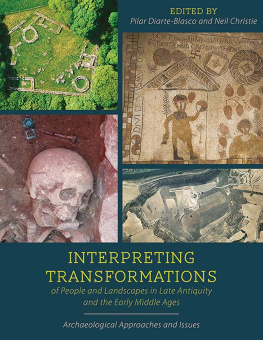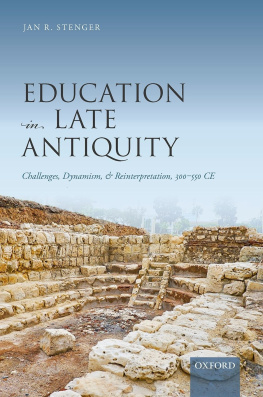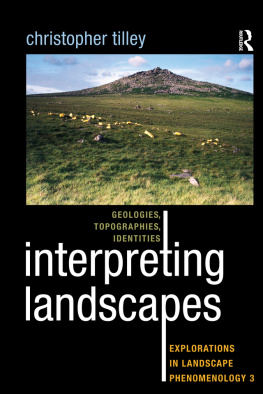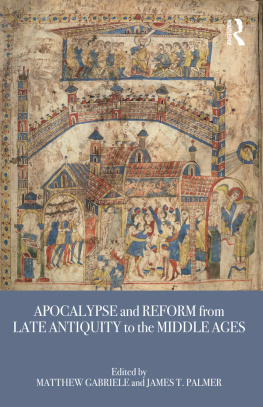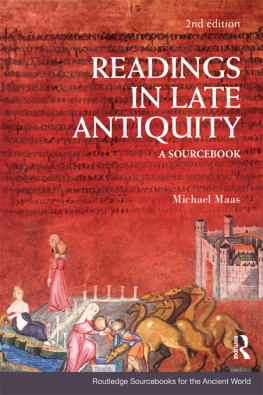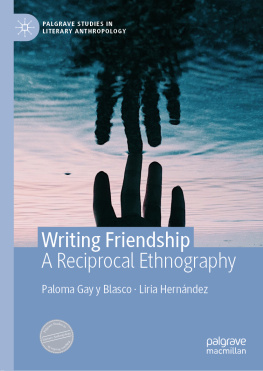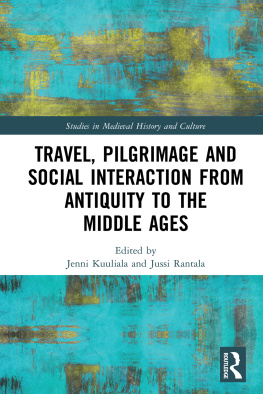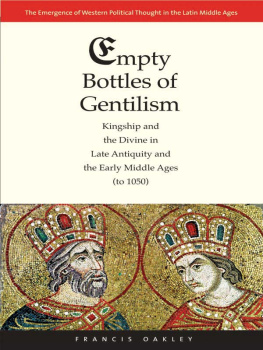Pagebreaks of the print version

INTERPRETING TRANSFORMATIONS OF PEOPLE AND LANDSCAPES IN LATE ANTIQUITY AND THE EARLY MIDDLE AGES
INTERPRETING TRANSFORMATIONS OF PEOPLE AND LANDSCAPES IN LATE ANTIQUITY AND THE EARLY MIDDLE AGES
ARCHAEOLOGICAL APPROACHES AND ISSUES
Edited by
PILAR DIARTE-BLASCO AND NEIL CHRISTIE

Published in the United Kingdom in 2018 by
OXBOW BOOKS
The Old Music Hall, 106108 Cowley Road, Oxford, OX4 1JE
and in the United States by
OXBOW BOOKS
1950 Lawrence Road, Havertown, PA 19083
Oxbow Books and the individual authors 2018
Hardback Edition: ISBN 978-1-78925-034-3
Digital Edition: ISBN 978-1-78925-035-0 (epub)
Kindle Edition: ISBN 978-1-78925-036-7 (mobi)
A CIP record for this book is available from the British Library
Library of Congress Control Number: 2018951274
All rights reserved. No part of this book may be reproduced or transmitted in any form or by any means, electronic or mechanical including photocopying, recording or by any information storage and retrieval system, without permission from the publisher in writing.
For a complete list of Oxbow titles, please contact:
UNITED KINGDOM
Oxbow Books
Telephone (01865) 241249
Email:
www.oxbowbooks.com
UNITED STATES OF AMERICA
Oxbow Books
Telephone (800) 791-9354, Fax (610) 853-9146
Email:
www.casemateacademic.com/oxbow
Oxbow Books is part of the Casemate Group
Front cover, from left to right: AP of Din Lligwy enclosure (Anglesey) with a combination round and rectangular stone buildings of Romano-British date ( Crown copyright: Royal Commission on the Ancient and Historical Monuments of Wales. Hawlfraint y Goron: Comisiwn Brenhinol Henebion Cymru)/Mosaic from the villa at Estada, Huesca (photo: J. Garrido. Courtesy of Museo de Zaragoza)/A Simancas-type knife and belt buckle, deposited next to the body in a grave from the fortified site of Dehesa de la Oliva, Madrid (photo: A. Vigil-Escalera)/Aerial view of Recopolis (source: cnig. es Centro Nacional de Informacin Geogrfica, PNOA 2010, Spain).
This volume has been published as part of the MED-FARWEST project based at the University of Leicester (UK) from 201517 and funded by the European Unions Horizon 2020 research and innovation programme under the Marie Sklodowska-Curie grant agreement No 658045.

List of Contributors
Editors
D R P ILAR D IARTE -B LASCO
Investigadora Juan de la Cierva (MICINN), Universidad
de Alcal, Departamento de Historia y Filosofa, rea
de Arqueologa, C/Trinidad, 1, 28801 Alcal de Henares
(Madrid), Spain
P ROF N EIL C HRISTIE
School of Archaeology & Ancient History, University of
Leicester, Leicester LE1 7RH, UK
Contributors
P ROF J AVIER A RCE
85, rue Yves Decugis, 59650, Villeneuve dAscq., France
P ROF E NRIQUE A RIO G IL
Departamento de Prehistoria, H a Antigua y Arqueologa,
Universidad de Salamanca, C/Cervantes s/n, 37002
Salamanca, Spain
P ROF G IAN P IETRO B ROGIOLO
Dipartimento dei Beni Culturali, Universit degli Studi di
Padova, Piazza Capitaniato 7, 35139 Padova, Italy
P ROF.SSA A LEXANDRA C HAVARRIA
Dipartimento dei Beni Culturali, Universit degli Studi di
Padova, Piazza Capitaniato 7, 35139 Padova, Italy
D R R OB C OLLINS
School of History, Classics & Archaeology, Newcastle
University, Newcastle Upon Tyne NE1 7RU, UK
P ROF S IMON E SMONDE C LEARY
Department of Classics, Ancient History and Archaeology,
University of Birmingham, Birmingham B15 2TT, UK
D R R OBERTO G OFFREDO
Dipartimento di Studi Umanistici. Lettere, Beni Culturali,
Scienze della Formazione, Universit degli Studi di Foggia,
Foggia, Italy
D R S TIJN H EEREN
Cordinator PAN: Portable Antiquities of the Netherlands,
Vrije Universiteit Amsterdam, Faculteit Geesteswetenschappen/
Faculty of Humanities, Department of
Archaeology, Classics and Near Eastern Studies, De
Boelelaan 1105, 1081 HV Amsterdam, Netherlands
D R R OBERTO M ENEGHINI
Sovrintendenza Capitolina ai Beni Culturali, Via IV
Novembre, 94, 00187 Roma, Italy
P ROF L AURO O LMO -E NCISO
Universidad de Alcal, Departamento de Historia y Filosofa,
rea de Arqueologa, C/Trinidad, 1, 28801 Alcal de
Henares (Madrid), Spain
P ROF C LAUDE R AYNAUD
CNRS (UMR 5140), LabEx-Archimede, Universit Paul
Valry Montpellier 3, Site Saint-Charles Bureau 202,
Route de Mende, 34199 Montpellier, France
P ROF S TEPHEN R IPPON
Department of Archaeology, University of Exeter, Laver
Building, North Park Road, Exeter EX4 4QE, UK
D R A NDREW S EAMAN
Archaeology Programme, School of Humanities, Canterbury
Christ Church University, North Holmes Road, Canterbury
CT1 1QU, UK
D R A BIGAIL T OMPKINS
West Berkshire Archaeology Service, West Berkshire
Council, Market Street, Newbury RG14 5LD, UK
D R A LFONSO V IGIL -E SCALERA G UIRADO
Investigador contratado Programa Extraordinario Usal
2016, Departamento de Historia Medieval, Moderna y
Contempornea, Universidad de Salamanca, C/Cervantes
s/n, 37002 Salamanca, Spain
P ROF G IULIANO V OLPE
Dipartimento di Studi Umanistici. Lettere, Beni Culturali,
Scienze della Formazione, Universit degli Studi di Foggia,
Foggia, Italy
D R R OGER W HITE
School of Classics, Ancient History and Archaeology,
European Research Institute, University of Birmingham,
Birmingham B15 2TT, UK
Preface and Acknowledgements
This volume is the fruit of two valuable conferences-cum-workshops held in 2016 which had as their core theme current debates in interpreting changes in landscapes, towns and societies in the period of Late Antiquity. While we set a working timeframe of c . AD 350600, it was recognised that issues in interpretation and in the evidence base could, in various territories, be extended back into the 3rd century; likewise, a proper understanding of the changes wrought often required consideration of archaeological sequences extending into the Early Middle Ages, to c . AD 700. Our geographical focus was on the western half of the old Roman world, where, as is well known, the historical record of Roman decay and late to post-Roman transition to new rulers is broadly but patchily drawn, while the related archaeologies are both complex and fragmentary and, of course, still being sought out and questioned. This volume is very much focussed on the archaeologies urban, rural, material, social of Late Antiquity but necessarily connects to the historical framework of new powers, conflicts and upheavals (natural as well as human).
We were honoured to have an array of leading scholars come to present and debate at our conferences, and to include a number of emerging researchers who benefitted much from the events. The first conference on Interpreting Transformations of Landscapes and People in Late Antiquity took place in Rome on 1011 October 2016 and focussed on landscape/settlement and social change in the western and central Mediterranean regions. The aim here was to observe or question how far changes in what were the more developed Roman provinces (in terms of economics, rural outputs and urbanism) were comparable: did towns endure longer even if their classical forms changed? How soon did the villa landscapes decay and fail? Did international trade and trans-Mediterranean connections persist after barbarian takeover? Do new settlement and economic forms emerge and if so, how rapidly and how widespread? Did a central control endure?

